The Warner gang's cap in Aguablanca: the unexpected masterpiece by Yohan Samboni from Cali

The Warners trafficked, robbed, intimidated, perhaps killed and were killed, and worked tirelessly in their prosperous and dangerous criminal business with a Road Runner, a Tweety Bird or a Tasmanian Devil on their heads: all the members of the gang – as a seal of sinister identity – wore original Looney Tunes caps.
Yohan Samboni saw them up close in the Los Lagos neighborhood of Aguablanca in Cali: they were his neighbors, and his father—who made his living as a shoe repairer—knew them well. They were the tough guys in the neighborhood. “They brought the caps back from speedboat trips that they used to smuggle drugs into the United States.” Caps featuring Bugs Bunny and his friends were the malevolent trophies of gang members who traveled beyond the borders of Aguablanca and “crowned” a “tour” in the United States.
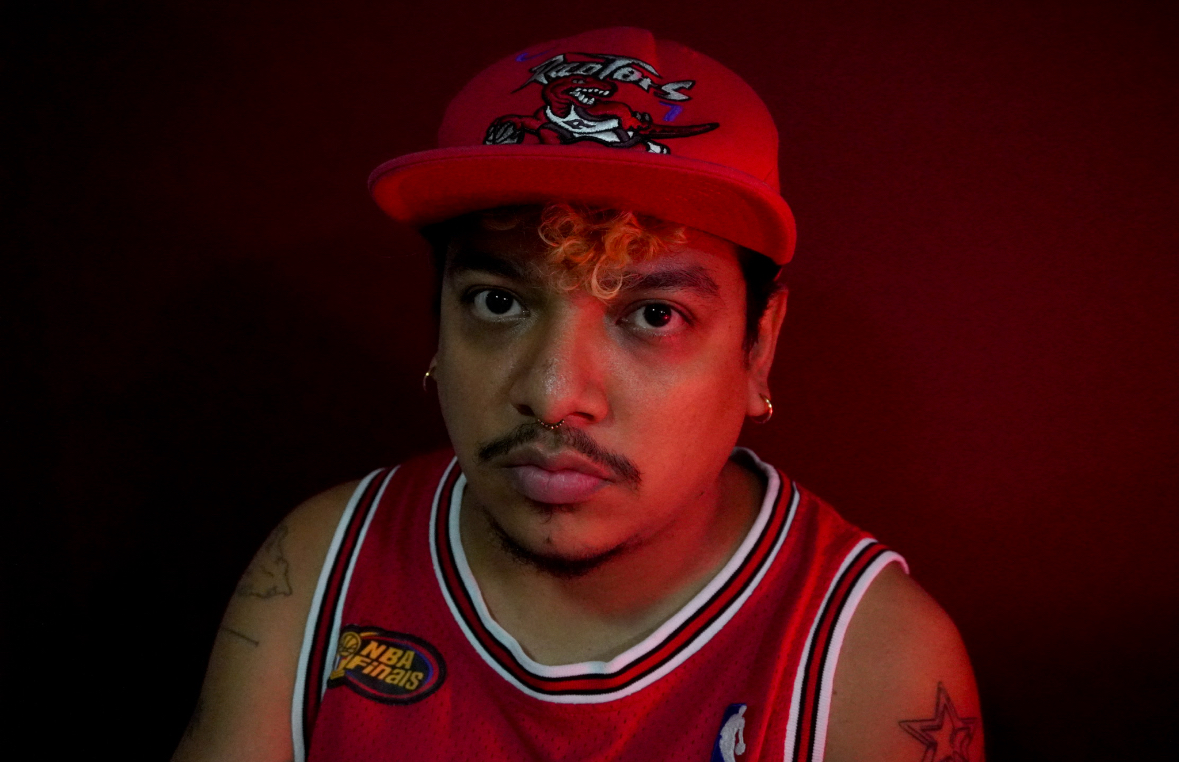
Yohan Samboni studied at the School of Fine Arts in Cali. Photo: Private archive
That particular cultural exchange between Cali and cities like Los Angeles and New York meant that the "American style" took over the neighborhood streets. Michael Jordan's Nike sneakers in Space Jam, low-rise pants, and t-shirts one or two sizes too big were an aesthetic imprint that even remained on the signs of every business. Yohan, since he was a child, was in charge of making the ads for his father's shoe store, and they inevitably featured a Warner Bros. character. Not all the "pelados" were in gangs (him, for example), and not all of them could wear an original baseball cap. But there's nothing that can't be faked. On the streets, people not only wore "chiviada" clothes and caps, but there was also a whole market for pirated movies and games; it was a world of "bewitching" and "bewitching."
Samboni's exhibition, at La Cometa Gallery in Bogotá (94a-25 Carrera 10), revives, recreates, and reimagines those days of tension and creativity; the first piece in the show is a complete one. "Techo" (Roof) is one of the most powerful works of contemporary Colombian art of the last decade. Samboni made a monumental cap from zinc cans—the roofs of the houses in Aguablanca—and painted it with Looney Tunes characters: Daffy Duck, Bugs Bunny, Tweety Bird, and the Tasmanian Devil pose like gang members on the front of the cap. On the sides, a proud Sylvester and a miserable Coyote appear. The piece also has sound: when you step inside the cap, you hear a musical journey through the neighborhood's streets: salsa, reggaeton, rap. And there's no room for bullets.
Samboni vindicates another life and the cultural value of "piracy," deliberately creating a series of "poorly executed" paintings to emphasize the authenticity of the "bewitching." One of his most glorious moments is a series of DVD covers for nearly fifty films that speak to the pure and simple era of piracy—such as The Snail Strategy and The Simpsons Movie in the 1990s and early 2000s—and others that somehow describe neighborhood life, such as John Singleton's "Los caballeros de la calle" (Street Masters ) or Walter Hill's gang classic " The Warriors ." There are also other covers that speak to Cali and the drug trafficking phenomenon in the Cauca Valley, with titles like "Perro como perro" (Dog as a Dog) by Carlos Moreno and "El Rey" (The King ) by Antonio Dorado. And, among other things, a series of covers for various PlayStation video games.
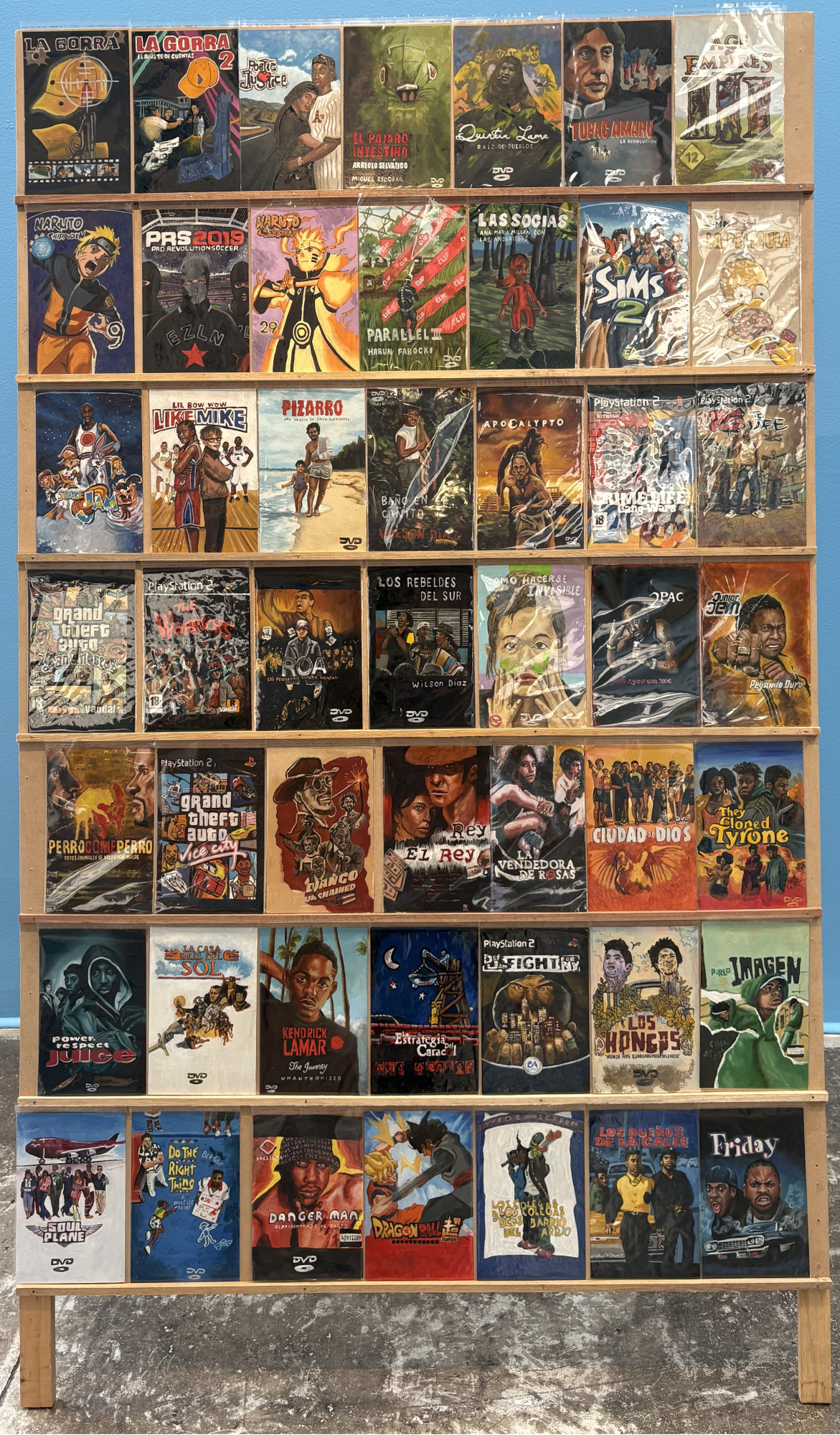
Samboni's pirated games and movies Photo: Fernando Gómez Echeverri
“PlayStation 2 was the first one they pirated,” says Samboni. “And for 2,000 pesos you could buy each disc. And for 500 you could stay in an arcade for half an hour.” And, among all the games, there was one that was a cult favorite in the first decade of the 21st century: GTA San Andreas. The other key piece of the exhibition is a video in which the protagonist, a boy with the same energy as Yohan's neighborhood, instead of entering into the game's violent dynamic, walks alone through the streets of his city; he climbs lonely valleys, contemplates a river, and never stops walking. It's a poetic and vibrant journey. It is—in a way—Yohan himself on his journey.
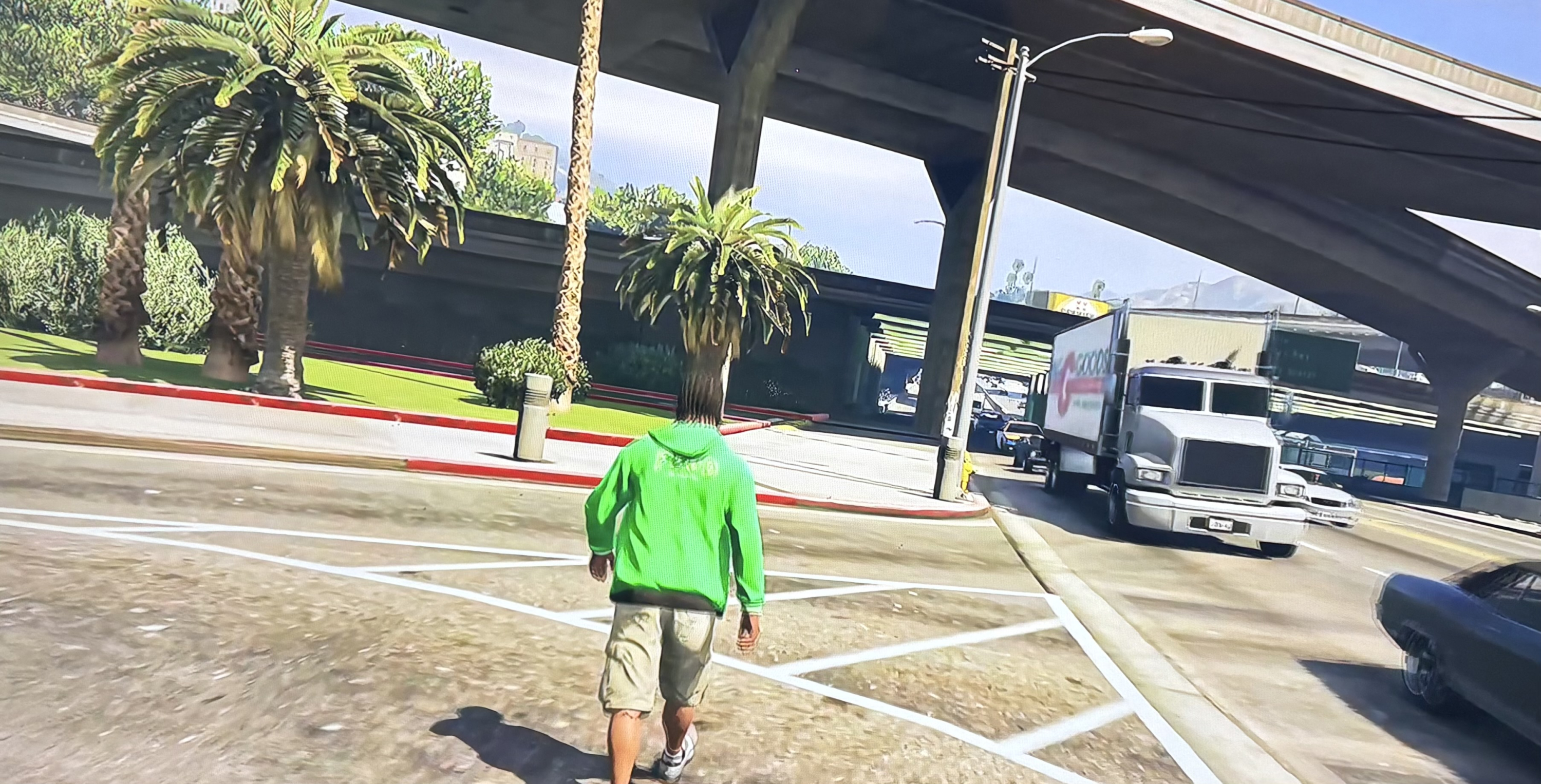
Samboni's GTA San Andreas video. Photo: Fernando Gómez Echeverri
The gallery also has two other exhibitions with the same energy. "We're Breaking It," curated by Harold Ortiz and with museography by Clara Arango and Orlando García, brings together works by Víctor Muñoz, Camilo Restrepo, Chócolo, Tatyana Zambrano, and Juan Caicedo. The title of the exhibition sums it up: they talk about breaking it for money.
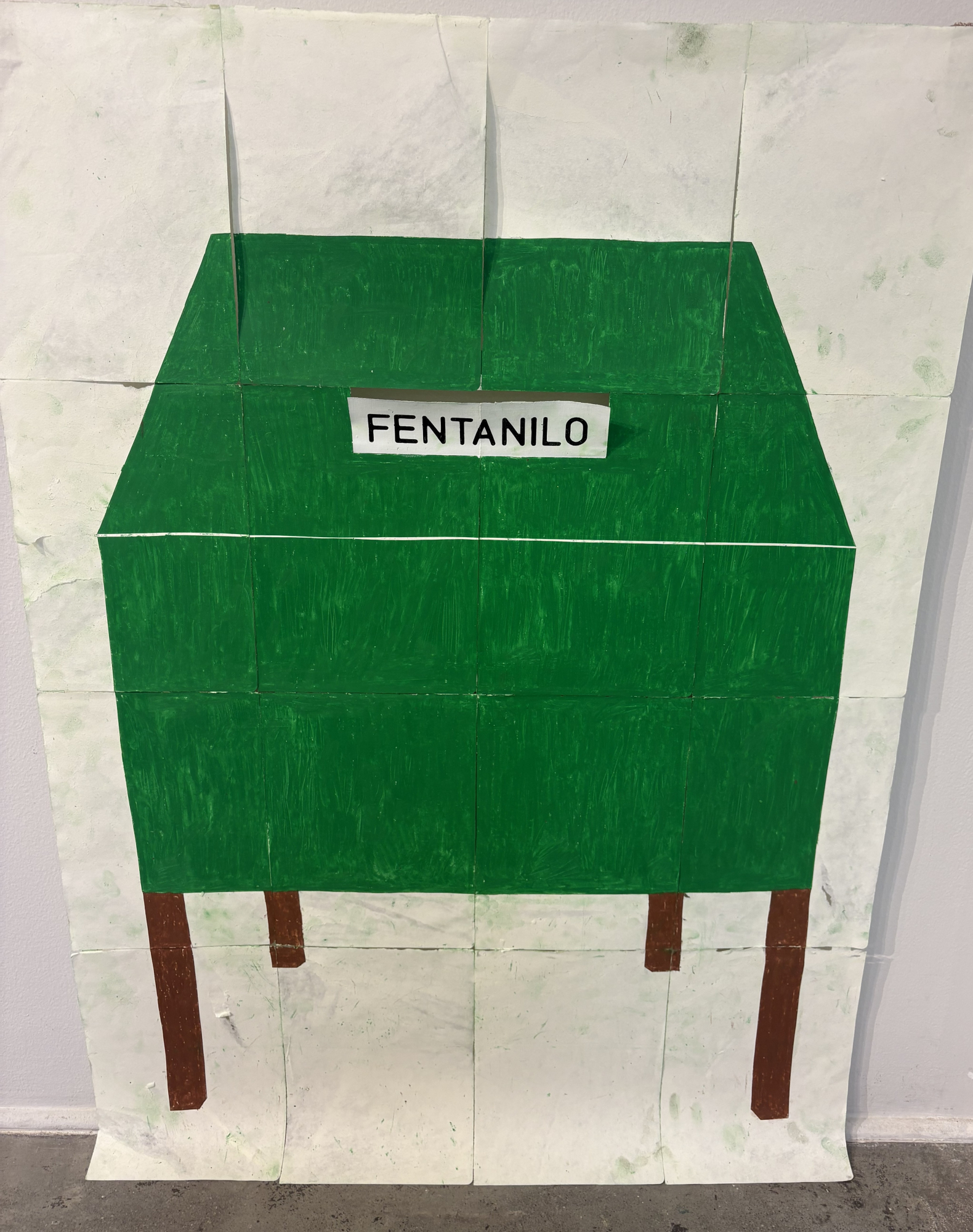
Fentanyl, by Camilo Restrepo Photo: Fernando Gómez Echeverri
Camilo Restrepo's work, for example, addresses addictions and police seizures and combines caffeine with cocaine and clonazepam in a series of green-tableclothed tables where, substance after substance, drug trafficking, dependence, and mental health are discussed.
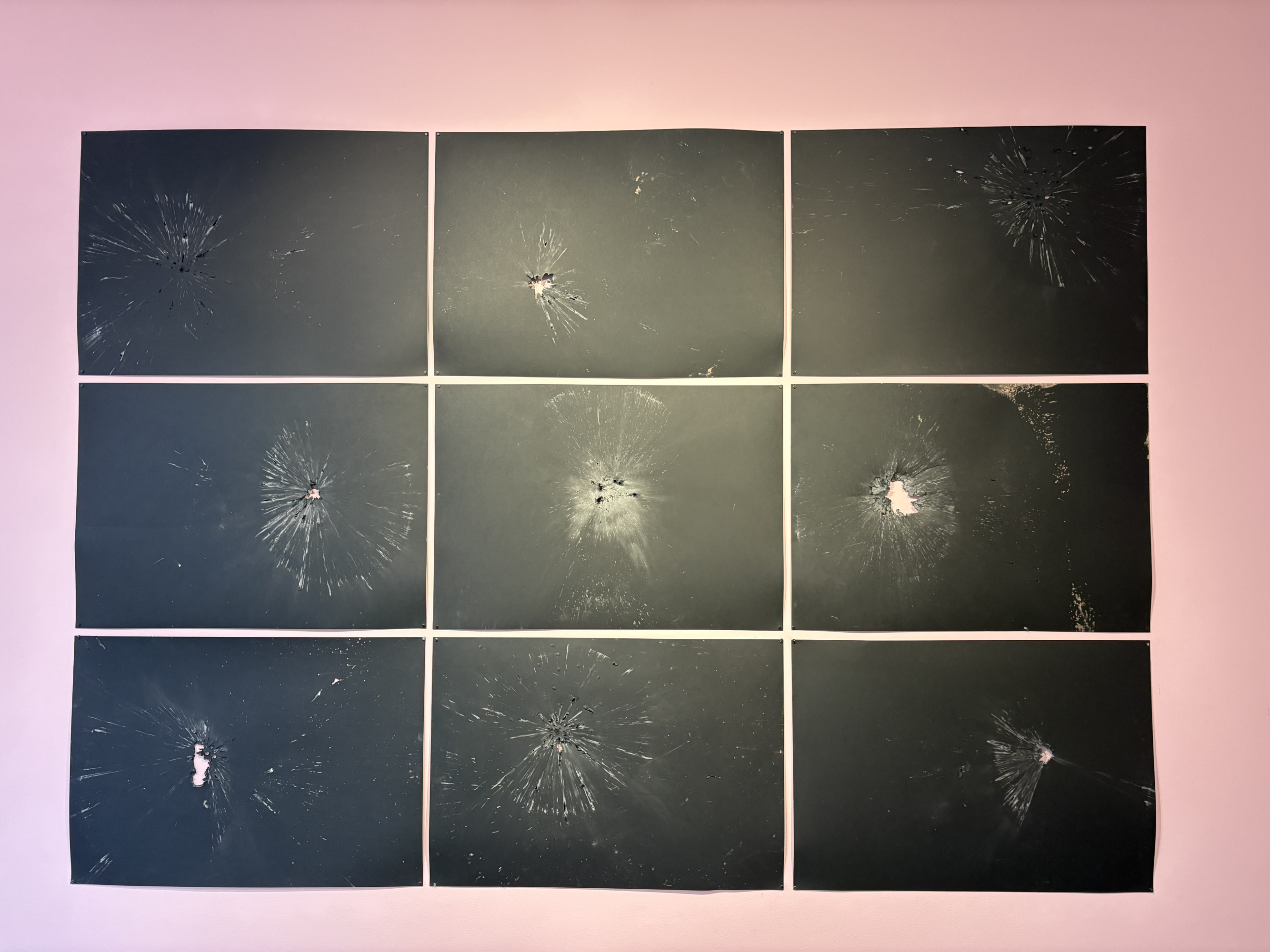
Víctor Muñoz captured the gunshots on paper. Photo: Fernando Gómez Echeverri
Víctor Muñoz—in that same vein of violence and decadence—immortalized shots on paper in an aesthetically chilling work with a title that speaks of Medellín, gunpowder, the traqueta culture , and violence: Alborada.
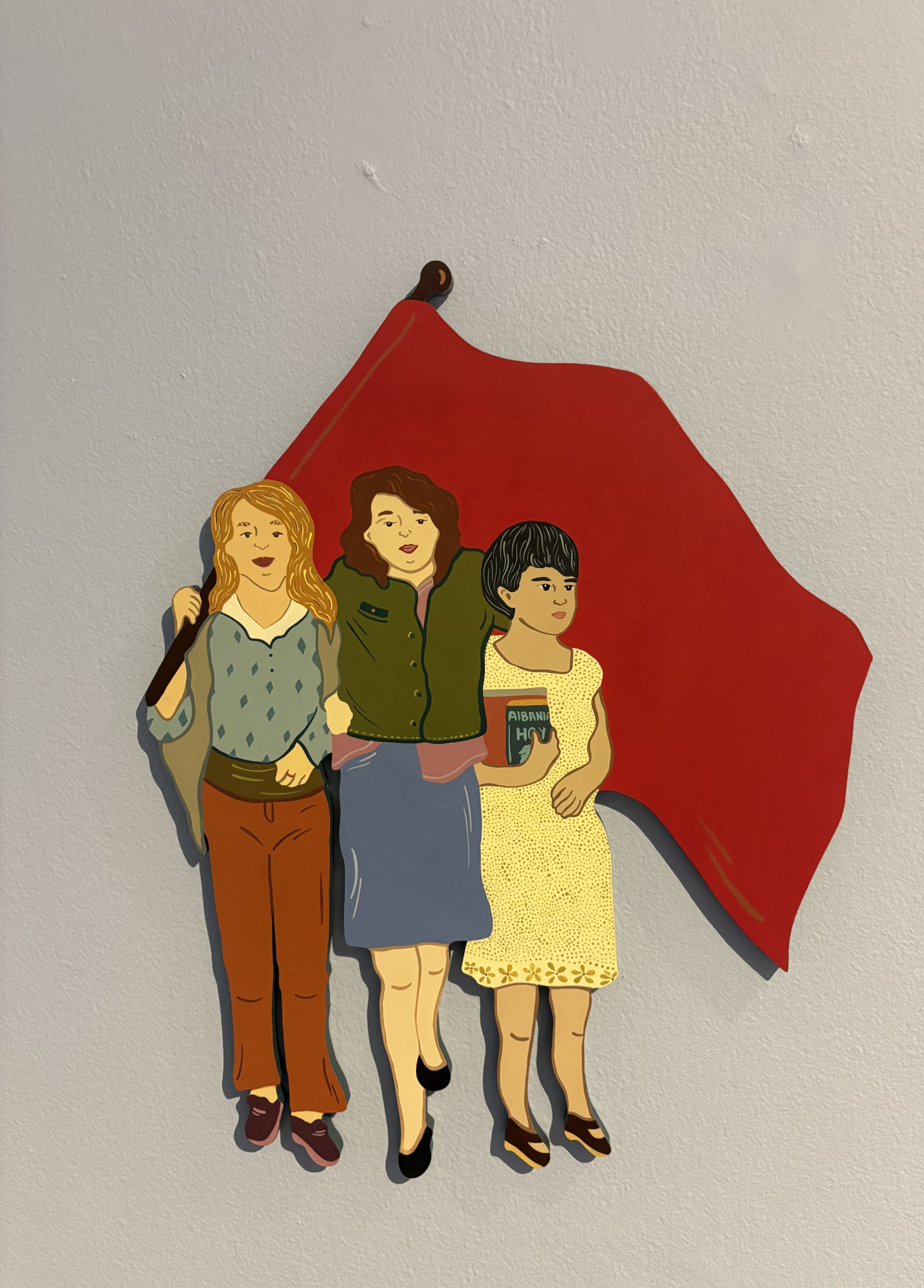
Gabriela Pinilla's work speaks to women in social movements. Photo: Fernando Gómez Echeverri
In another room—just off the entrance—is a small solo exhibition by Gabriela Pinilla that completes the entire cycle. Her work speaks to the working-class women who fought for their rights and the rights of workers in neighborhoods where—just a few years later, amidst poverty and inequality—the rampant violence of drug trafficking was incubated, but also where artists and notable figures were born because of women like them. Don't miss it; each work deserves a place in a museum.
Recommended: Freda Sargent in BOCAS Magazine 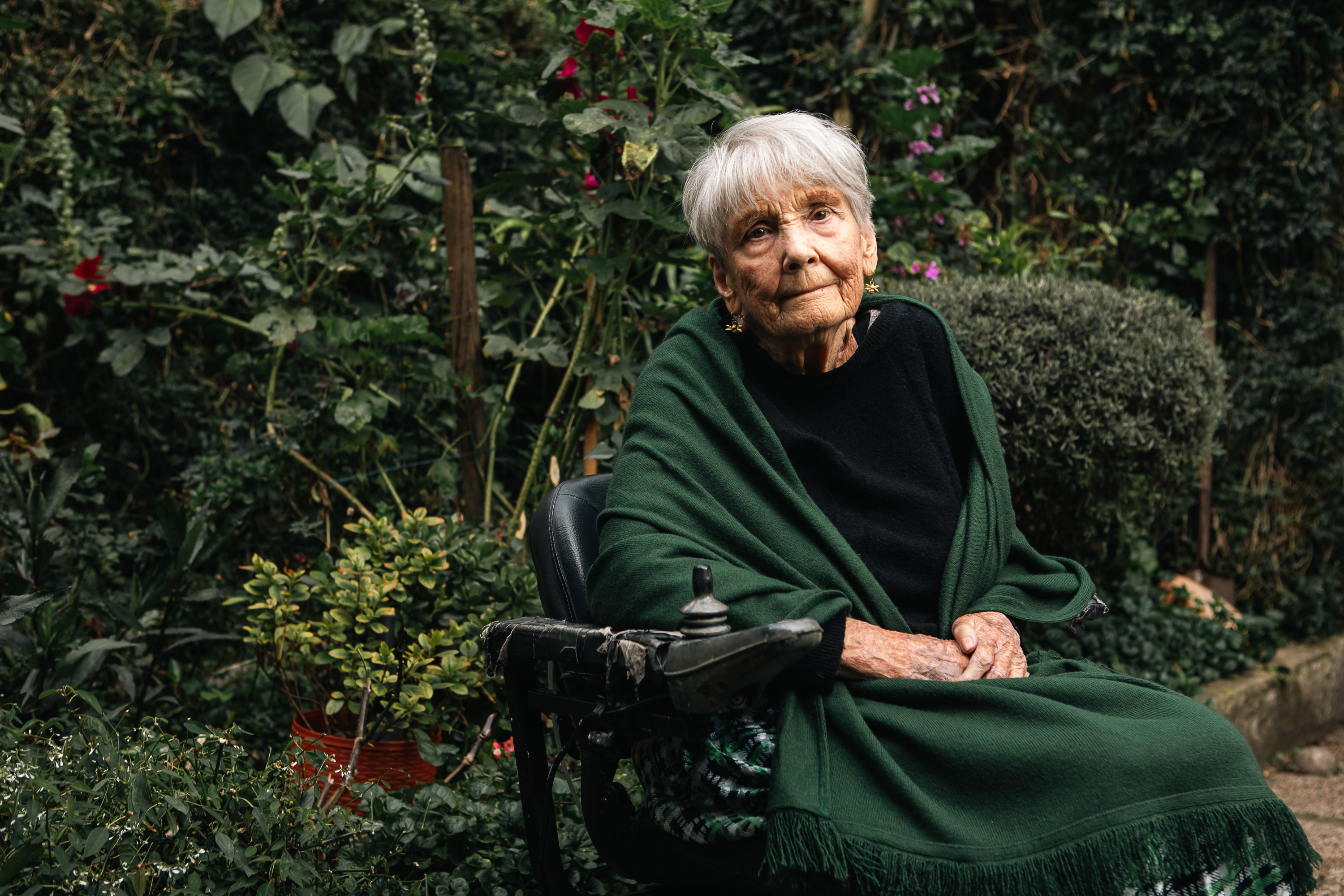
The garden is one of Freda Sargent's major themes. Photo: Sebastián Jaramillo / BOCAS Magazine
eltiempo





